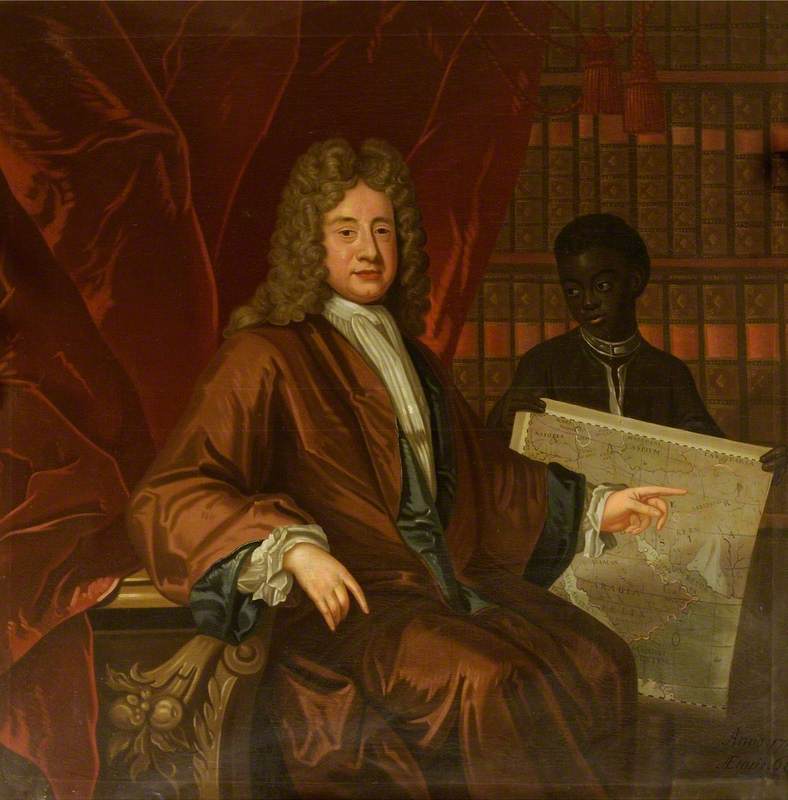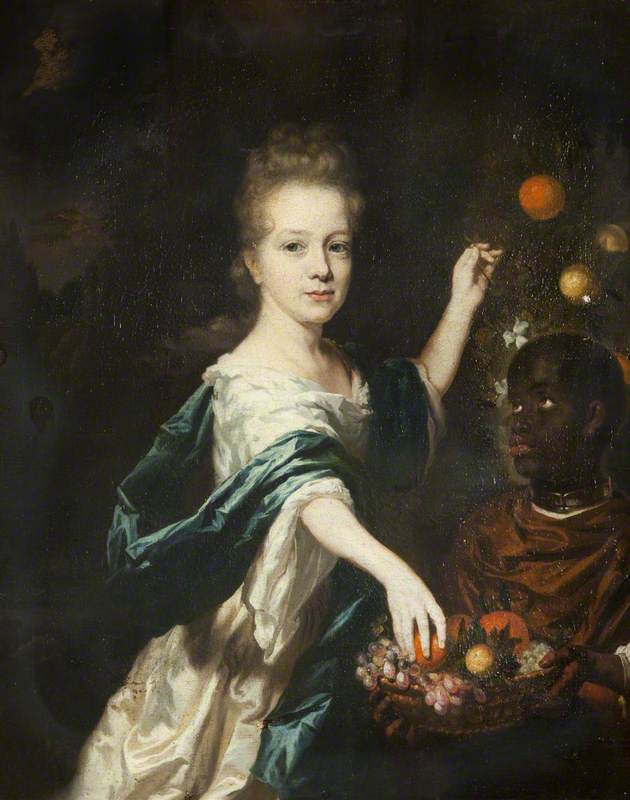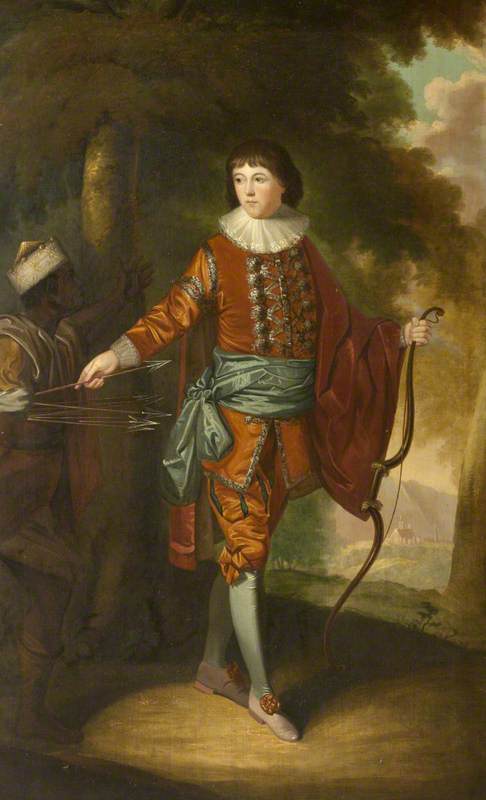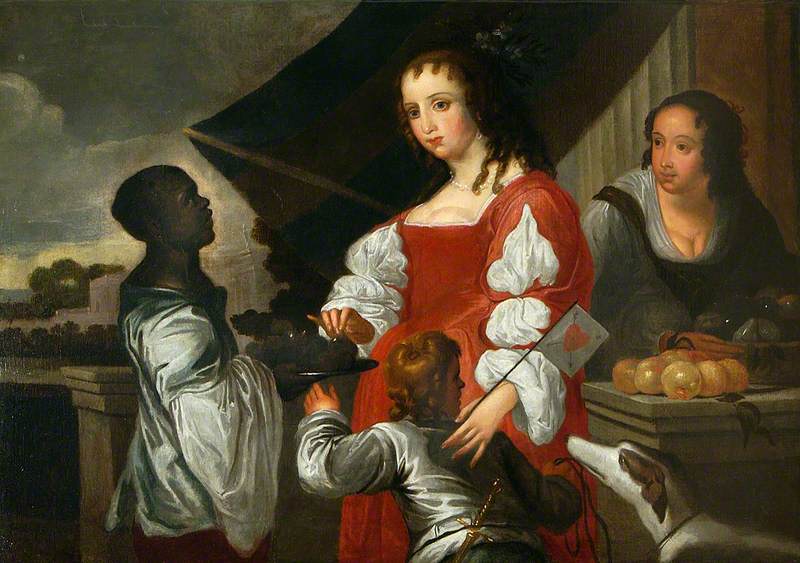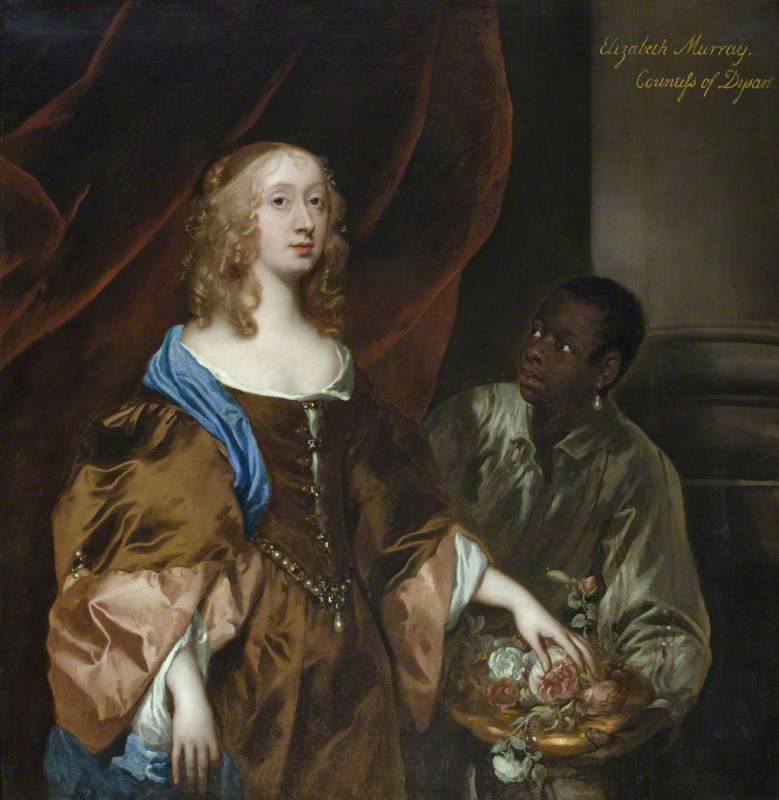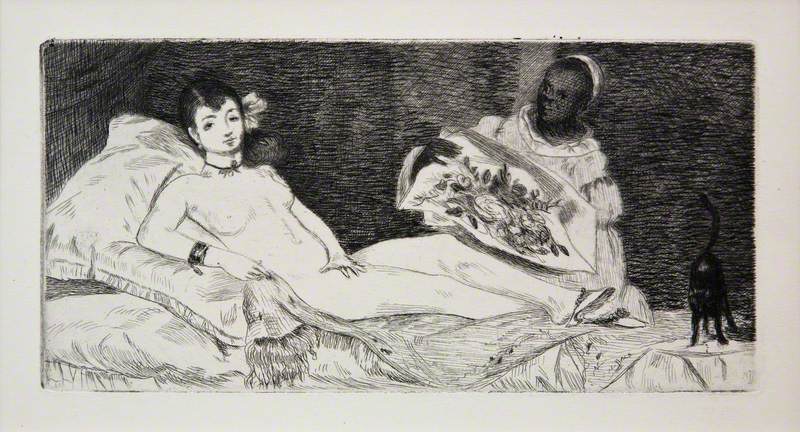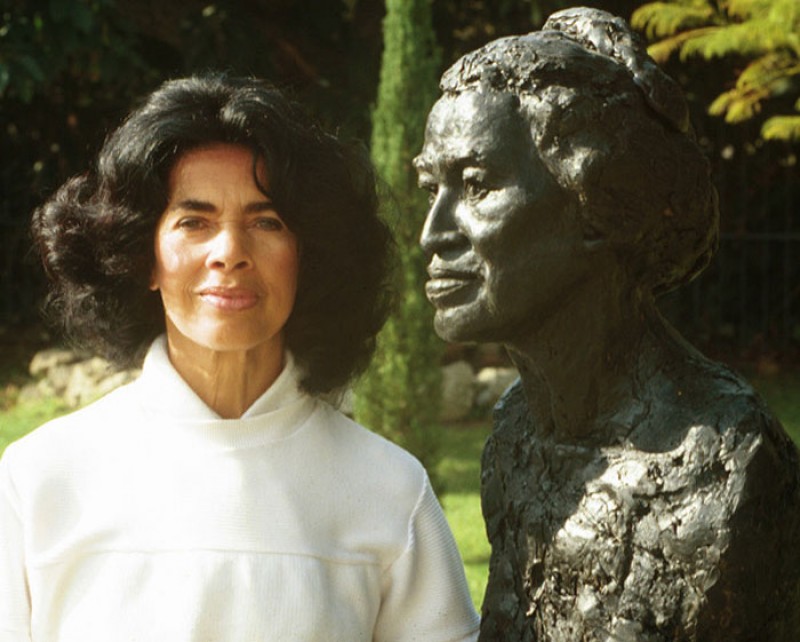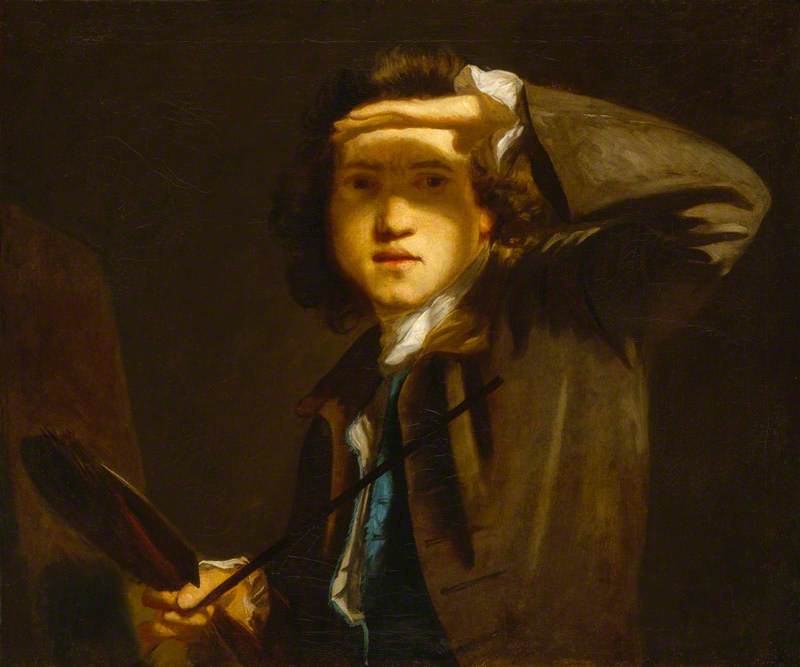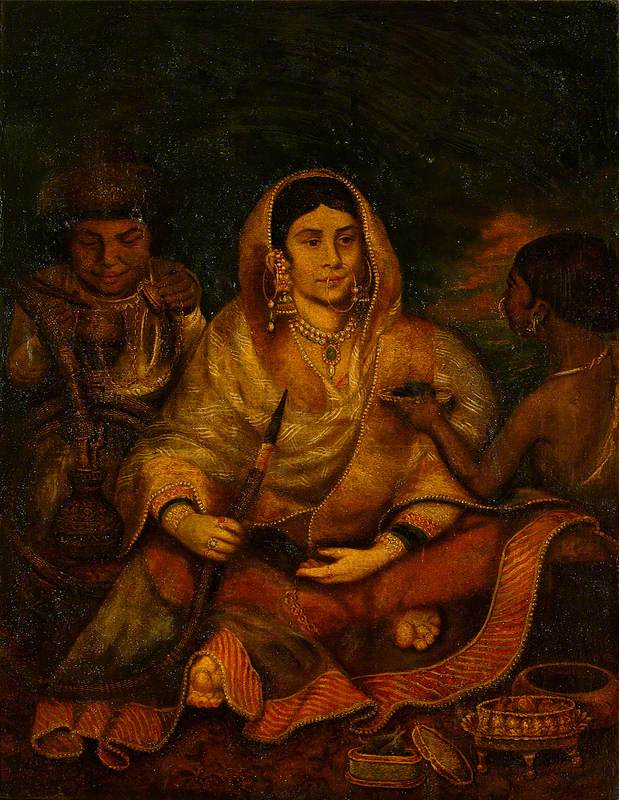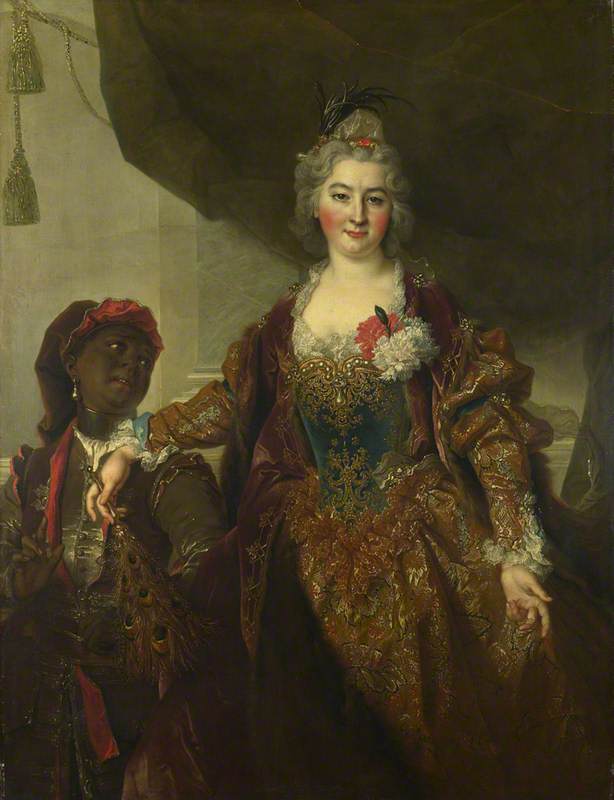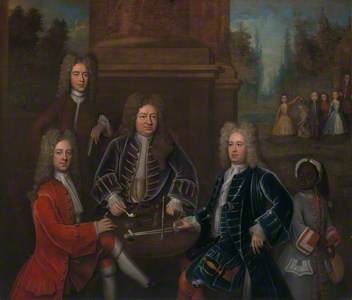It was increasingly fashionable, and a form of social currency from the seventeenth century onwards, for the Black servant in the British aristocratic home to be shown in portraits. This inclusion was a status sign of wealth, and having portraits created was a public way to record these lives. This pictorial inventory has been found in homes of those from royalty to the landed gentry, and across class and county boundaries within the UK.
Princess Henrietta of Lorraine (1611–1660), Attended by a Page
1634
Anthony van Dyck (1599–1641) 
There are two known paintings of Caesar Shaw at Althorp House. Caesar Shaw, enslaved by the Spencer family in Althorp, Northamptonshire, is shown in a servile position in a portrait by George Knapton. Shaw is bent down next to a pet dog – this posture elevates the status of the Spencer family members portrayed.
Caesar Shaw was an African slave to the Spencer family in the 18th century. He was baptized in Northampton and was owned by John Spencer. Caesar Shaw is featured in two portraits at Althorp House. #AHouseThroughTime pic.twitter.com/DvyeR0JKZ9
— John Constable (@JohnConstableRA) May 29, 2020
These portraits are not uncommon for this era and they encapsulate the seventeenth-century fashion for aristocrats to be presented next to Black individuals, as a way to demonstrate their social and economic status, and whiteness.
George IV (1762–1830), when Prince of Wales
(after Joshua Reynolds) 1780
John Hoppner (1758–1810) 
This 1780 full-length portrait is of the Prince of Wales in Garter robes attended by a Black servant. As with many Black people situated in early portraits with white people, the servant's face is obscured or they are seen from either the back or the side profile. Showing minimal facial features obscures the evidence of the Black individual in apparently white spaces, and simultaneously demonstrates the whiteness of the aristocracy.
The Black presence in these various portraits demonstrated the establishment involvement in the transatlantic slave trade.
Lord Coleraine's commissioned portrait of his two younger sons, Lucius and Montague, in a landscape scene, also shows an African servant and a dog: this was one of two surviving objects from the early history of Bruce Castle.
Bruce Castle, originally a sixteenth-century manor house known as 'Lordship House', was frequented by royal visitors and used as a refuge from a plague outbreak at the end of the 1500s. Henry Hare, 2nd Lord Coleraine of Bruce Castle in Tottenham was a person aspiring to elevated social status, who arranged the remodelling and renaming of Lordship House.
The Hare sons were depicted as angelic figures, in cherubic poses to represent the products of sacred love, which could be linked to the mysterious death of Lord Coleraine's first wife, Lady Constantia Lucy.
In this painting, despite the angelic trope, the two brothers and the dog look startled, while the African boy has no face, no eyes, no name.
Many African people in portraits are shown, along with any animal present, to have a collar to signify ownership as property of the white people depicted in the image, or they have a white hand of control placed on a shoulder or a head.
Lely's portrait depicts Elizabeth Murray standing next to an unidentified Black servant. Like Lord Coleraine, the Duchess of Lauderdale also had an unexplained family death recorded as her attempts to elevate her financial and social status were thwarted.
In John Giles Eccardt's portrait, an additional image of Lady Tollemache is shown with a Black servant, along with a cockatoo and a spaniel – further examples of wealth and status; this painting also indicates the longevity of the custom of having Black servants in the homes of British aristocrats.
In this portrait, female whiteness is elevated with the Black servant, the cockatoo, and the spaniel all looking upwards with adoration to the white woman, the Countess of Dysart, who gazes directly at the artist. Black people were positioned at the edge to the back of the portraits, frequently next to domesticated mute animals, as silent tributes to the economic fortunes of their owners.
With a few notable exceptions, like Dido Elizabeth Belle, and Queen Victoria's gift godchild Sara Forbes Bonetta, there were mainly young Black boys living and working in British aristocrats' homes. It is recorded that the young Black pages and servants were returned to labour on the plantations in the Caribbean once they became teenagers and young men.
In Oxburgh Hall, Norfolk hangs a portrait that links the historic Bedingfeld family to the presence of Black people within their walls. This family home was completed in 1482 for Sir Edmund Bedingfield, and the 1658 portrait features full-face images of a well-dressed unnamed boy, girl and an indistinct profile of a Black page.
The title of the work is variously known as Two Children and an Attendant and A Boy and a Girl and a Black Page: two of the children are attributed with their childhood status, the third, the Black page, is denied the acknowledgement of his childhood and recognised only by his role towards the centrally placed white children and their family.
The Black page, wearing a pearl earring, holding grapes and looking towards the central two characters, is positioned on the edge of the painting, as if an afterthought.
A Young Girl with an Enslaved Servant and a Dog
c.1725
Bartholomew Dandridge (1691–c.1754) 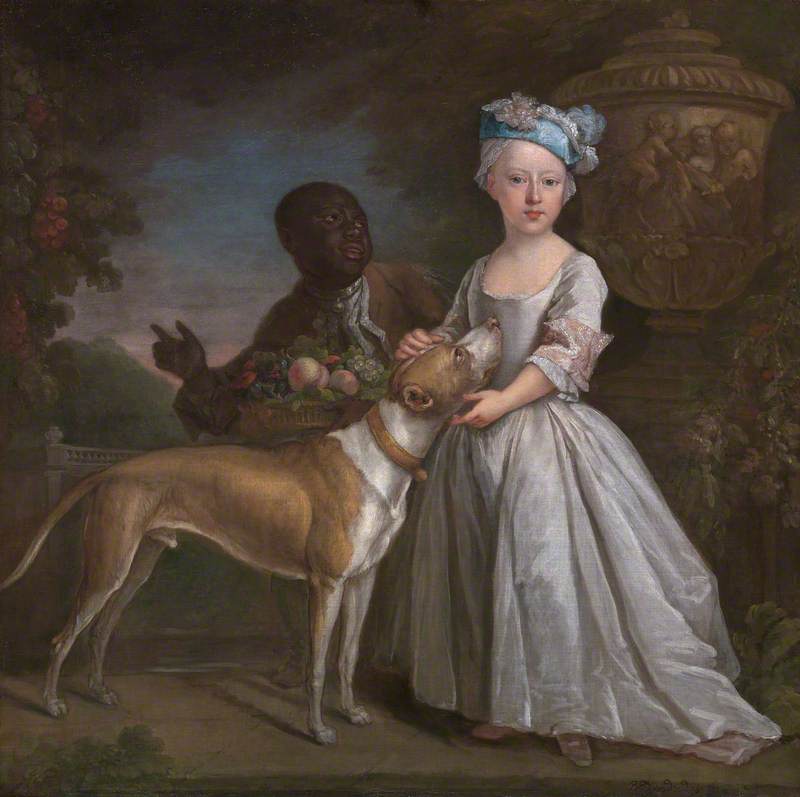
Grapes, and other fruit, also feature in the Bartholomew Dandridge portrait of a young girl with a dog and a page, painted around 1725, where the Black page looks adoringly towards the girl who is focused on the painter while absently petting her dog.
When named, the servants were often titled with what are now deemed offensive names, such as 'Sambo'. In the below image by Charles Phillips, held in the Sprivers collection in Kent, the Black child, carrying the tray of fruits, is dressed in a fine livery while also wearing a collar to signify that he was enslaved.
Mary Helden (1726–1766) with a Dog and Her Black Page, 'Sambo'
1739
Charles Philips (1708–1747) 
Mary Helden (1726–1766) with a Dog and Her Black Page, 'Sambo', is another portrait example that depicts the opposition of Blackness adoring the whiteness it beholds, while in a position of servitude similar to or just elevated from dogs or other animals. Mary Helden was married to Thomas Foster, MP, whose occupation is listed as a politician and plantation owner with financial and political interests in several Caribbean islands like Jamaica, as well as in Surrey, Devon and Dorchester in Britain.
It is uncertain if the Black servant shown with Mary Helden was a trope or an actual portrait that represented the family interests in their multiple plantations in St Elizabeth, Jamaica, St Kitts and Nevis. The Heldens and Fosters were part of a network of British families that held enslaved people in the Caribbean and Britain.
Supposed Portrait of Florence Smyth (b.1634), and an Unnamed Black Attendant
c.1640
Gilbert Jackson (active 1615–1645) (circle of) 
This earlier portrait (c.1640) by Gilbert Jackson, once hung in the Smyth family home at Ashton Court Mansion, Bristol. The unnamed girl, supposed to be Florence Smyth, and her unnamed Black attendant are both dressed in clothing that signifies both the family wealth and the early presence of Black people in the port city of Bristol. The girl has a distracted look while the Black page appears enamoured by everything about the girl.
Florence Smyth is shown as she plucks a robin from the nest that the Black boy holds. This could signify the loss of innocence or be interpreted as a sign of a nurturing intention. Equally, from a Black perspective, this can be seen as a mirroring of the Black servant's life: he is plucked from the safety of his home and family and still has to genuflect as a minstrel as a means of survival.
The theme of imposed adoration and service continues in the painting by Joshua Reynolds of Charles Stanhope, 3rd Earl of Harrington, and a Servant. [Editors note: the painting title has since been updated following research.]
Charles Stanhope, 3rd Earl of Harrington and Marcus Richard Fitzroy Thomas
1782
Joshua Reynolds (1723–1792) 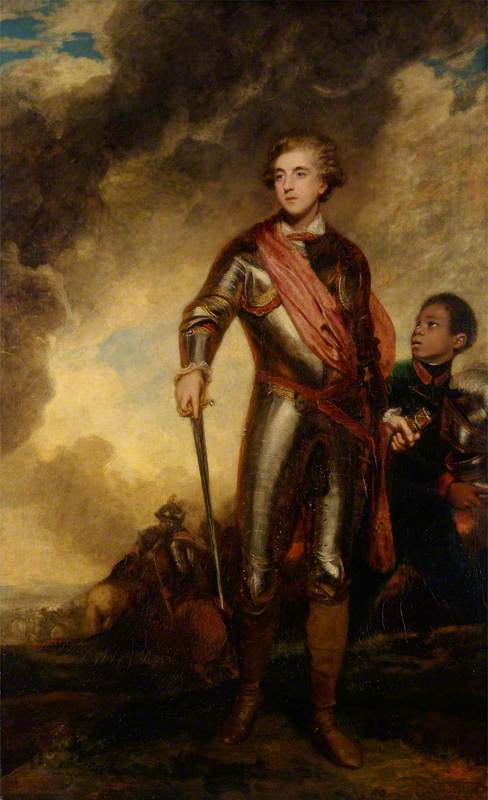
This portrait is believed to have been commissioned by Charles Stanhope to commemorate his succession to the title of third Earl of Harrington, and his rise in military rank. The young Black man holding Stanhope's helmet is unnamed, but shown in the standard pose of adoration and service. Most Black servants had no choice in their position in British society, as seen with Sara Forbes Bonetta – who was taken and then given as a living gift to Queen Victoria.
The addition of Black domestic servants to British households was seen as a sign of immense wealth, especially if the family could pay to dress them in expensive livery or fine clothes, give them an education, and additionally pay them a servant's wage, as was the case with Charles Ignatius Sancho, who worked for Lady Mary Churchill, Duchess of Montagu. Sancho was identified in the family ledgers as 'ye Black of her Grace', and he was left a pension in the Duchess's will.
Not every Black person in Britain in the sixteenth to nineteenth centuries was in a position of servitude and there is evidence to suggest that portraits were made of these free citizens, along with – on occasion – their works.
Olaudah Equiano ('Gustavus Vassa')
(after W. Denton) published 1789
Daniel Orme (c.1766–c.1832) 
Olaudah Equiano or Gustavus Vassa, the African, was an example of a different reality of the Black African person in British society. In this portrait, published in 1789 as a frontispiece to his autobiographical The Interesting Narrative of the Live of Oloudah Equiano, by Gustavus Vassa himself, the image is of a refined, learned, fashionable gentleman.
Gustavus Vassa used this portrait, and his book, to demonstrate that formerly enslaved people and African-descended people were more than the degraded status that was frequently attributed to Black people within the African diaspora. He was forcibly enslaved when he was eight years old, and his writings were used to further the abolitionist movement. He worked with the Sons of Africa movement and the Society for Effecting the Abolition of the Slave Trade in the eighteenth century.
Gustavus Vassa showed that Black Africans had both the intelligence and capacity to rise above the status of chattel (property of another human being), and live their lives as free and equal individual human beings in the public eye.
Marjorie H. Morgan, playwright, director, producer and journalist
